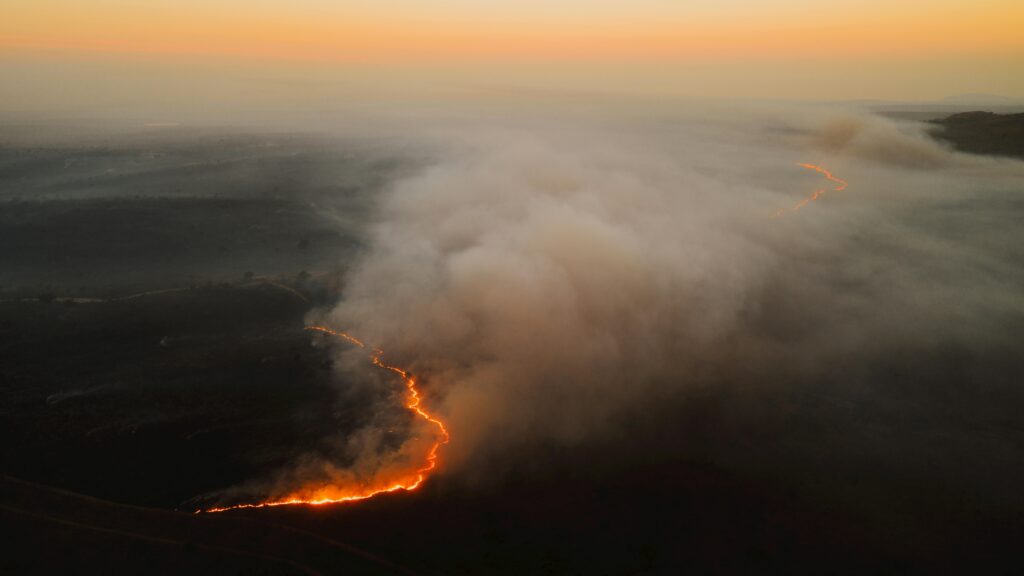By Seán C. Malone and John Sweetman
The origin of this story was probably about six years ago, when Seán and I were reviving a couple of old Motorola hand-held radios from his firefighting days.
“Looks like we need batteries!” And Seán said, “Look in the freezer because I have several boxes of double A’s.” And sure enough, he did, which I immediately identified having come from his last firefighting adventure. At that time, it must have been 15 years or more. Sure enough, they worked just fine.
One may wonder how a number of excess batteries came to be surplussed to whomever could use them. When the fire is out, and the debris and extra stuff is either left on the scene or just carried off from jumbled piles, it’s too expensive and difficult to move, inventory, and store stuff to the next fire. One might consider this wasteful, but the exact opposite is true.
It’s the same with feeding firefighters 7,000 calories a day because 18-hour days of smoke and continuous work are more taxing than a marathon. Massive amounts of food are required.
Firefighting is like a fast-moving war, and radios are the vital link in rapid communication under really nasty circumstances. Radio operators are like catchers in baseball; only they can see the whole field. All firefighting crews are hopefully oversupplied because fire moves a lot faster than a quartermaster’s requisition pencil.
For example, a chainsaw that breaks down is simply cast aside and a new one is picked up. Normally, a broken saw requires a “sit down” on a convenient log for a bit of a fix. Not so with firefighting and rapid changes of intense and deadly conditions. Brief, explicit radio communication is key to fighting a fire. If you listen to fire communications without onsite context, you will not be able to make any sense of anything.
Seán related some of his experience.
I was fighting fire with a pick and shovel in the summers when I was a student at the UW. I had a girlfriend who grew up in Roslyn and was a physical education major, while I was in the School of Forestry. I drove my old Model “A” to Roslyn to meet her four brothers. Someone told me that the Forest Service needed firefighters, because the fire in Wenatchee was out of control.
I parked my old 4-door Ford at the Ranger Station in Cle Elum, where they loaded 30 of us on a bus and drove us over Blewett Pass to the fire in Canyon 3. I was handed a shovel and told that our purpose was to protect the city of Wenatchee.
The Forest Service was fighting the fire at night and we dug out a four-foot-wide fire line. At 2:00 a.m., we were told to take a break until the morning. We had no place to go, so the foreman told us to sleep in 4 feet of ashes, because the ashes were soft to lie down in and warm from the fire.
In the morning, we were told to pack our gear and fly to Baker, Oregon, as the Snake River fire was also out of control. The DC-3 must have been a smokejumper plane, as there was no rear door in the cargo area where we exited upon landing at the Baker airport. The Forest Service then trucked us 25 miles to a camp on the edge of the Snake River gorge.
They made me a radioman because of my experience with amateur radio. The PRC 10 was a tactical backpack radio that must have weighed 80 pounds. I was assigned to work for the Division 2 commander; Dick was a high school teacher from Cle Elum.
Not long after, I was sitting on a rock halfway down the slope to the river, and the commander was sitting on a rock above me. “Seán, please give me coordinates for that heavy smoke across the river from us. I will call them in to the Wenatchee airport and request a borate drop.” Borate is a fire-retardant and came out of the plane as a heavy pinkish powder.
Later on, there were five bi-wing Stearmans overhead. Because the Stearman planes had no radios, there was a low-wing Piper Comanche leading the by-planes that were stacked up. When I made radio contact with the Piper Comanche, I gave him the coordinates for the drop and directed him to the fire.
As the plane flew over the hot spot, I yelled into my mic, “Now!” And the pilot wagged his wings, signaling to the by-planes above us where to make the drop. They peeled out of their column and dropped their borate over the fire. The borate mixture tended to form clumps which the fan in the bottom of the Stearman failed to break up. We were always told to stay behind a tree when there was a drop, because it was dangerous. One day, an old firefighter stuck his head out from behind his tree. He was killed by a clump of borate that the plane’s fan failed to break up. I was also told that we lost six pilots on that fire.

